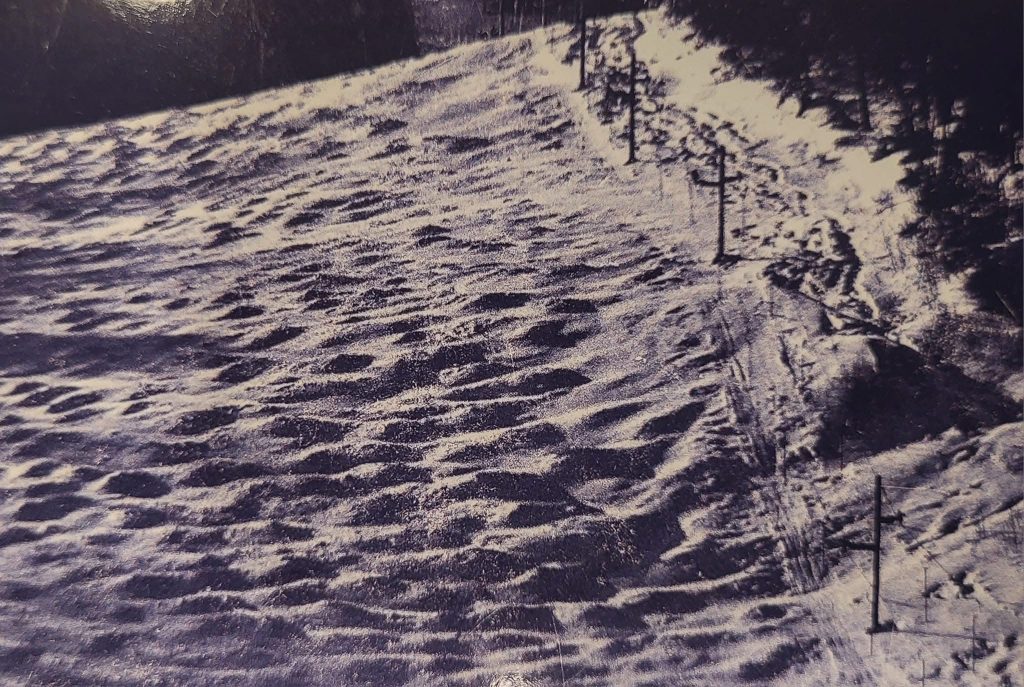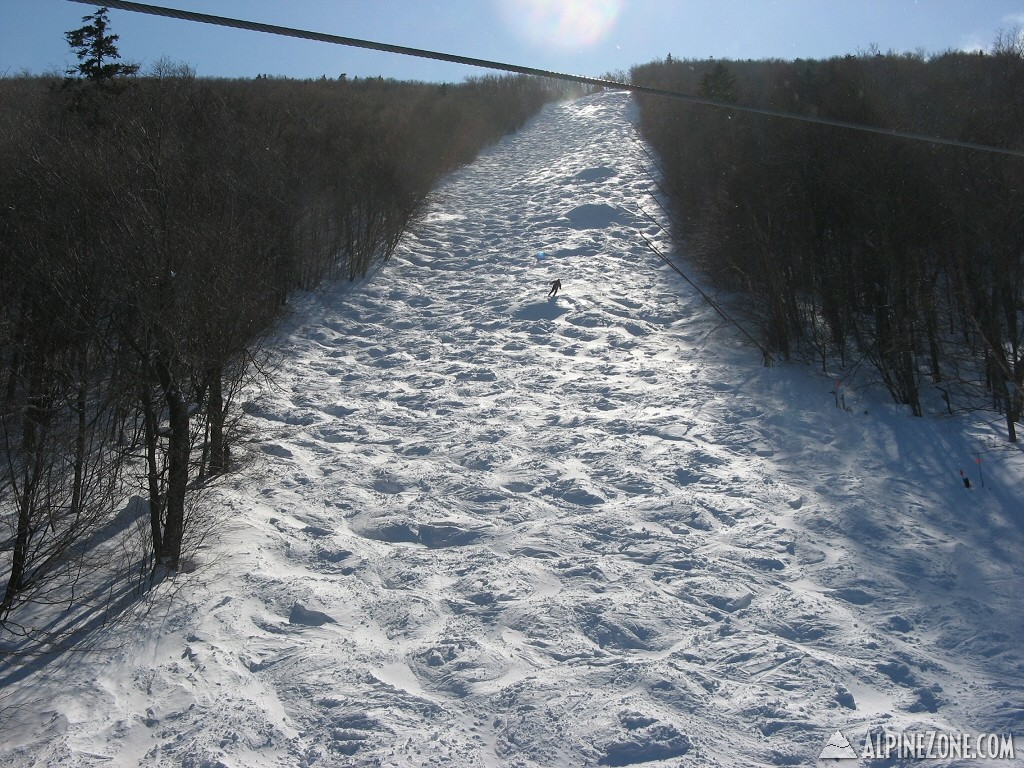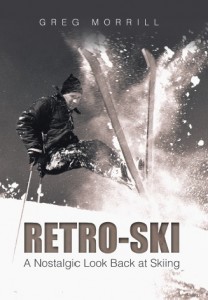Last week I covered what I believe is the first step to a life “hooked on skiing” and that was the parallel turn. While I don’t remember the exact date, I do remember where I was the day something clicked and I began executing Christie turns. I was skiing at a now lost New Hampshire ski area called Intervale. Little did I realize that some 60 years later I’d still be executing those turns (hopefully better!) and writing about them.
So after you make those parallel turns and your confidence is building, you encounter the next hurdle to being a lifelong skier. It’s a word that strikes fear into almost every skier: moguls! Much like I remember when I made my breakthrough to parallel, I also remember my first encounter with moguls. I started to traverse the slope thinking I’ll turn on the first bump. Well, Ok not on the first bump, but the next one, or the next one, or … Until I reached the other side of the slope! Does that sound familiar to anyone?
As common as the word “mogul” is to skiers, the derivation of that term is less well known.
The word “mogul” for a bump on a ski slope comes from the Bavarian/Austrian German word mugel, which means “mound” or “hillock”.
I would add that the turning of repeated skiers pushes the snow to form these mounds and hillocks!
There’s a harsh quote that sort of captures the mogul phase of learning to ski. “Its not that you can’t ski moguls. It’s that you can’t ski, and the moguls prove it.” So it’s back to work for the aspiring skier to apply what they learned to this new setting plus learn a few new things. And in my opinion moguls require repetition and that’s every year. Just because I skied moguls well last season doesn’t mean I will this season unless I practice. If space allows I’ll come back to this later in the column.
Back in the Retro-Ski days there were a lot of moguls! Grooming was in its early stages and seldom was steeper expert terrain groomed. Remember back in December this season when they opened Nosedive with all natural snow and no grooming? You had to work through big moguls in the turns and then smaller bumps all the rest of the way to the bottom! That’s what all the expert trails were like back in the day. If you were an expert, you had to ski moguls.
Fast forward to today. With snowmaking and grooming, trails like Nosedive aren’t really mogul runs any more. Even Liftline gets groomed on a regular basis. Every time I see people flying down Liftline with varying degrees of control, I shake my head and think of how it used to be!
Don’t get me wrong, I enjoy a good groomer more and more as I age! And I always hated the bumps that formed on trails not steep enough to warrant them. So modern grooming is a plus.
Let’s compare snowmaking moguls to natural snow moguls. In general, I prefer natural snow moguls. They tend to be softer and more regular allowing for better edge control. Granted, they are also the bumps I learned on and skied for so many years. However in the spring, snowmaking bumps are better! They corn up and are long lasting, providing hero snow for an extended ski season.
As I mentioned earlier, I still find mogul practice necessary. That includes staying in the fall-line, keeping my weight forward, keeping the skis on the snow, and more pressure on the outside ski. To accomplish this requires what I call “practice bumps.” It’s difficult to practice on trails like Starr and Goat, but one of my favorite practice sections is Lower Lower National. Small bumps, gradual pitch, and natural snow make it ideal. Granted they did just groom that trail last week.
Some ski areas have created mogul sections for learning or practice. By the way, the FIS competition mogul courses use that same approach to create their moguls. How boring!



February 23, 2025 at 3:42 am
As I remember I skied “steep” fairly well – and I skied “moguls” adequately (meaning no one was left injured by the time the trail flattened out). “Steep” plus “moguls” however was not my favorite combination. A couple of runs on Jericho at Jiminy Peak confirmed that back in the 80’s. It seemed to whisper to me “ha! You thought you were advanced-intermediate” but think again!”. Humbling.
May 18, 2025 at 3:40 pm
Free XXX and Free Sex. Find Free XXX websites galore! https://xxxxxxxxxxxxxxx.co/ see you inside…